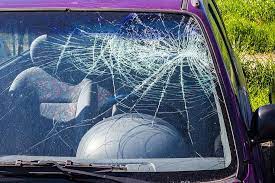Your vehicle’s windscreen is not just a piece of glass; it’s a crucial component that ensures your safety and enhances your driving experience. A cracked or damaged windscreen compromises your visibility, weakens the structural integrity of your car, and increases the risk of accidents. In this blog, we’ll delve into the importance of timely windscreen replacement, the factors to consider, and the steps involved in ensuring a smooth and safe windscreen replacement process.
The Significance of Windscreen Replacement: A pristine windscreen is essential for maintaining an unobstructed view of the road. Small chips and cracks may seem harmless, but they can quickly escalate into major safety hazards. Impaired visibility due to cracks can hinder your ability to judge distances, detect obstacles, or even read road signs accurately. Furthermore, a damaged windscreen is more susceptible to shattering upon impact, posing a serious risk to the occupants of the vehicle. To guarantee your safety and that of your passengers, it’s imperative to address windscreen damage promptly.
Factors to Consider When Replacing a Windscreen:
- Quality Matters: Opt for high-quality OEM (Original Equipment Manufacturer) or OEE (Original Equipment Equivalent) glass. These types of glass are specifically designed to meet the safety and structural requirements of your vehicle.
- Certified Technicians: Choose a reputable auto glass replacement service with certified technicians. Proper installation is crucial to ensuring your windscreen functions as intended during accidents and contributes to the overall structural integrity of your vehicle.
- Insurance Coverage: Check whether your insurance policy covers windscreen replacement. Many comprehensive insurance plans include coverage for glass damage, making the replacement process more affordable.
- Environmental Impact: Consider eco-friendly disposal options for your old windscreen. Some auto glass companies recycle the old glass, reducing environmental impact.
The Windscreen Replacement Process:
- Assessment: A certified technician will inspect the damage to determine whether the windscreen requires repair or replacement. Extensive cracks, deep chips, or damage near the edges often necessitate replacement.
- Preparation: The technician will remove the wipers, trims, and any other components obstructing the windscreen.
- Removal: The old windscreen is carefully removed, ensuring that no damage occurs to the surrounding frame or paint.
- Cleaning and Primer Application: The frame is cleaned and primed to ensure proper adhesion of the new windscreen.
- Installation: The new windscreen is placed, aligned, and bonded to the frame using a special adhesive. Precision is crucial to maintain structural integrity.
- Curing: The adhesive needs time to cure and bond the windscreen securely to the frame. This waiting period ensures the windscreen’s stability and safety.
- Final Inspection: The technician will perform a thorough inspection to ensure proper installation and adherence to safety standards.
Conclusion: Your windscreen is not just a glass barrier; it’s a vital safety feature that demands attention and care. Promptly replacing a damaged windscreen is essential for your safety, clear visibility, and the overall well-being of your vehicle. By understanding the significance of windscreen replacement, considering essential factors, and following the proper replacement process, you’re not only safeguarding yourself and your passengers but also contributing to responsible and safe driving on the roads. Remember, a clear view va flawless windscreen is the first step towards a safer journey.
